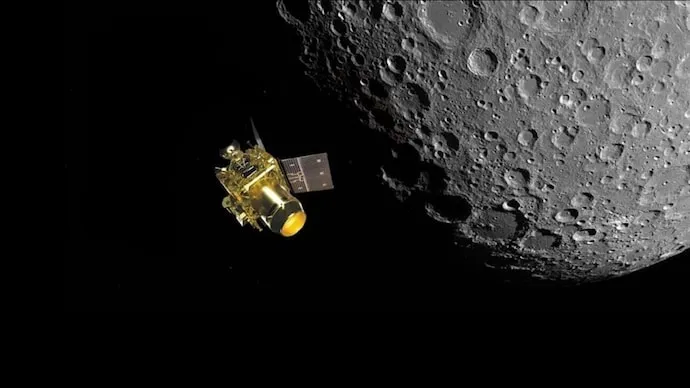Chandrayaan-2 Data Enhances Understanding of Moon's Polar Regions

BENGALURU: The Indian Space Research Organisation (ISRO) has unveiled a new set of advanced data products derived from the Chandrayaan-2 mission, aimed at enhancing understanding of the Moon's polar regions. Since entering lunar orbit in 2019, the Chandrayaan-2 Orbiter has been instrumental in gathering data that reveals critical insights, particularly regarding potential deposits of water ice.
The orbiter carries the Dual Frequency Synthetic Aperture Radar (DFSAR), which has delivered high-resolution, full-polarimetric data at a precision of 25 metres per pixel. The DFSAR operates by transmitting and receiving radar signals in both vertical and horizontal directions, making it particularly effective for examining both the surface and subsurface properties of the Moon.
Utilising approximately 1,400 radar datasets, scientists at the Space Applications Centre (SAC) in Ahmedabad have generated detailed polarimetric mosaics that cover latitudes from 80 to 90 degrees in both hemispheres. The derived products provide insights into potential water-ice deposits, surface roughness, and the dielectric constant, which indicates surface density and porosity.
ISRO described these datasets as "a first-order resource for understanding the Moon’s polar regions, which are believed to preserve the early chemical conditions of the solar system." The new data complements existing hyperspectral observations, allowing researchers to examine mineral distributions and surface characteristics more comprehensively.
Key radar parameters included in the polar mosaics help indicate possible water-ice presence. The Circular Polarisation Ratio (CPR) is a significant marker for identifying subsurface ice, while the Single Bounce Eigenvalue Relative Difference (SERD) quantifies surface roughness. Additionally, the T-Ratio relates to the dielectric constant of the lunar material, and polarimetric decomposition components reveal various types of radar scattering processes.
The Level 3C polar mosaic products are now available for free download on ISRO’s Indian Space Science Data Centre (ISSDC) PRADAN portal. Users can utilise the CH2 MapBrowse tool to visualise and explore data related to the lunar north and south poles, including areas such as the Peary Crater in the northern hemisphere.
ISRO has encouraged global researchers and students to access these datasets, which are anticipated to contribute to future lunar exploration missions and studies on planetary evolution. The release of this data marks a significant step forward in lunar research, especially regarding the thermal stability of areas where water ice may persist, thus aiding in resource utilisation and future landing site selections.
The findings provide a deeper understanding of the Moon's untouched polar environments, which are believed to hold some of the earliest chemical signatures of the solar system. The integration of radar and hyperspectral data from the Chandrayaan-2 mission is expected to refine global models of lunar mineral distribution, paving the way for further scientific inquiry into the Moon's geology and history.

Premier League: Matthijs de Ligt's Late Header Earns Draw for United

Axar Patel's Strategic Bowling Leads India to Victory Against Australia

Zayed Khan Emotionally Bids Farewell to His Mother Zarine Khan

New Devotional Track 'Shiv Stotram' Released for Film 'Jatadhara'





